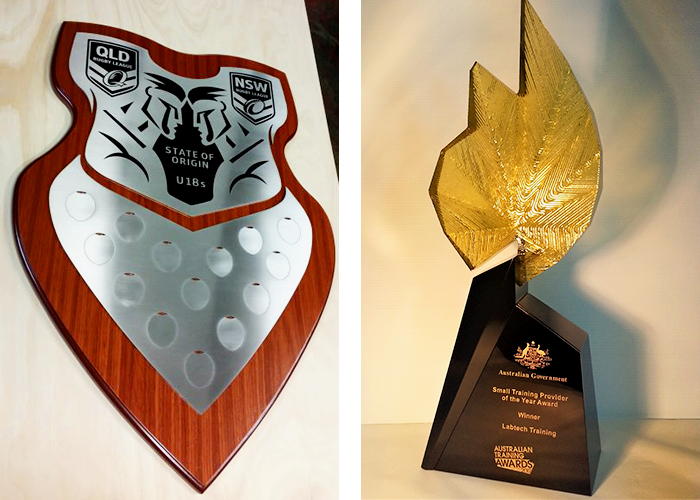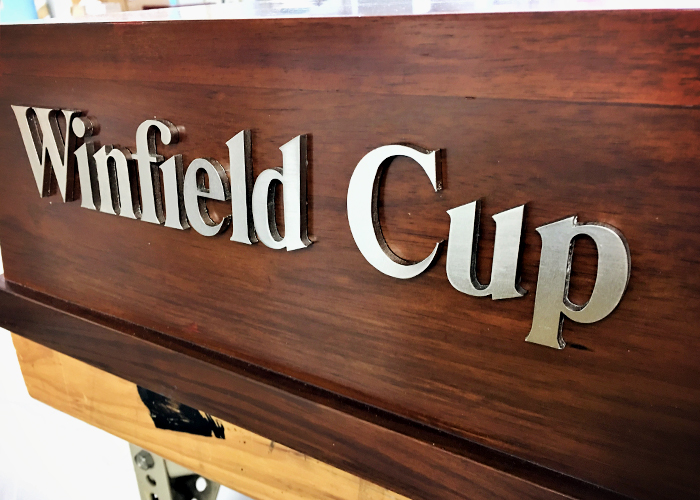Sport Participation and Awards from Architectural Signs Designed by Roger Apt; Engraving by Architectural Signs. According to the AusPlay April 2017 State and Territory Results, 3,681,500 NSW adults participated in sport or physical activity at least three times/week in 2016. This was a participation rate of 59%, which is in line with the national rate of 60%. Adult participation in sport or physical activity
Unlike adult data, the AusPlay survey measured children's participation in organised sport or physical activity outside of school hours. It found that almost 292,000 or 21% of NSW children aged 0-14 years participated at least three times per week. This includes games, training and practice. The national rate was 20% and all states were in line with this figure.
Top 10 activities
 Designed by Roger Apt; Engraving by Architectural Signs. Barriers to participation The Australian Sports Commission in partnership with the CSIRO released two reports in 2013. Market Segmentation for Sport Participation - Adults (aged 14-65 years) and Market Segmentation for Sport Participation - Children (aged 5-13 years old). This research reported a range of barriers to club participation including that Australians:
In recognition of the fact that there has been an increase in non-organised or time-flexible pursuits and a stagnation of participation numbers in organised sport, the research provided key insights outlining how the sport sector can influence motivations and behaviours that children have towards sports club membership. The benefits of being active An active population brings health, social, and economic benefits. The Office of Sport is therefore committed to increasing participation in sport and active recreation to address rising obesity rates and reduce healthcare costs to cardiovascular and other lifestyle related diseases. Being active doesn't only have a positive impact on physical health, it can improve our mental and emotional wellbeing too. Architectural Signs has been providing engraving services for sporting and general awards over the last 30 years. For more information on these awards and other engraving services visit www.arcsigns.com.au.
|
02 9680 2151 28/8 Victoria Ave, Castle Hill, NSW, 2154
|
|||||||||||||||||||||||||||||||||||||||||||||||||||||||||||||||||||||||||||||||||||||||||||||||||||||||||||||||||||||||||||||||||||||||||||||||||||||||||||


 The Benefits of Sandblasting and Its
The Benefits of Sandblasting and Its Laser Cutting for Your Business from
Laser Cutting for Your Business from Laser Cutting Benefits from
Laser Cutting Benefits from Customised Building Signage from
Customised Building Signage from Custom Desktop Bar by Architectural
Custom Desktop Bar by Architectural Building Signage for Businesses from
Building Signage for Businesses from Outdoor Signage from Architectural Signs
Outdoor Signage from Architectural Signs Industry Signage from Architectural
Industry Signage from Architectural Custom Corporate Awards for McDonald's
Custom Corporate Awards for McDonald's Name Badges for Staff and Offices by
Name Badges for Staff and Offices by Directory for Hospitals and Clinics
Directory for Hospitals and Clinics Benefits of Signage from Architectural
Benefits of Signage from Architectural Signage for Beauty and Skincare from
Signage for Beauty and Skincare from Seasonal Signage Ideas from
Seasonal Signage Ideas from Long Service Recognition and Specific
Long Service Recognition and Specific Corporate Awards Customised by
Corporate Awards Customised by Sports Signage from Architectural Signs
Sports Signage from Architectural Signs Brass Engraving NSW by Architectural
Brass Engraving NSW by Architectural Safety Signage for Building and
Safety Signage for Building and Commemorative Engraved Plaques from
Commemorative Engraved Plaques from
